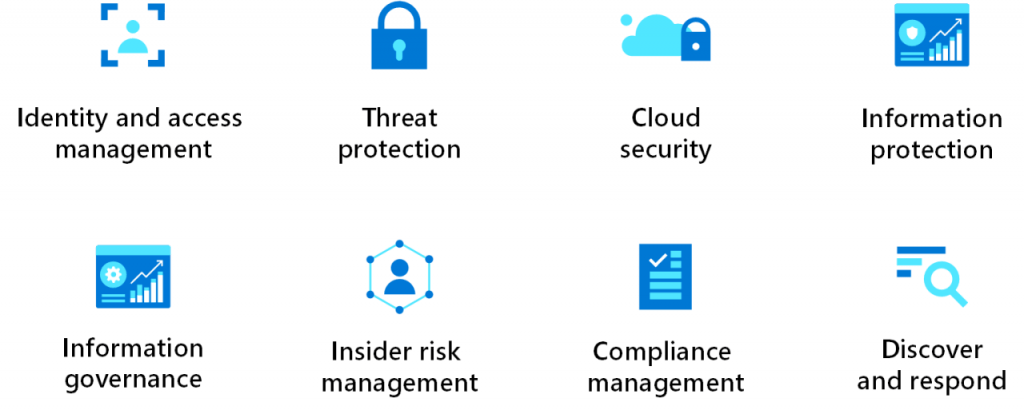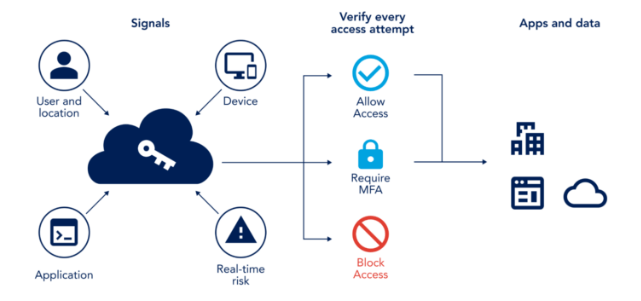
- Introduction to Azure Security Center
- Core Features of Azure Security Center
- How Azure Security Center Works
- Azure Security Center’s Integration with Other Azure Services
- Setting Up Azure Security Center for Your Environment
- Best Practices for Maximizing Azure Security Center’s Capabilities
- Cost Management and Azure Security Center
- Future of Cloud Security: Azure Security Center’s Roadmap
- Conclusion
Introduction to Azure Security Center
Azure Security Center is an integrated security management platform that Microsoft Azure offers enhanced threat protection for cloud workloads. It assists organizations in securing their cloud infrastructure and enables users to obtain visibility into potential weaknesses, detect security threats, and establish best practices for maintaining a secure environment. Azure Security Center is firmly integrated with Azure and presents businesses with a convenient means to monitor security for virtual machines, networks, databases, and storage. To deepen your expertise in securing cloud environments, consider Microsoft Azure Training , which provides hands-on experience and best practices for implementing security controls, managing threats, and ensuring compliance within Azure. The system accommodates continuous monitoring and makes suggestions to eliminate risks. Azure Security Center is firmly integrated with Azure and presents businesses with a convenient means to monitor security for virtual machines, networks, databases, and storage. In today’s fast-paced digital era, safeguarding your cloud environment is more vital than ever. As more companies shift towards the cloud, protecting critical data and workloads becomes indispensable. Microsoft’s robust cloud security management tool, Azure Security Center, gives businesses complete cyber security protection for the cloud. Through this tutorial, we shall lead you through Azure Security Center’s features, advantages, and tips and reveal why it’s an indispensable protection tool for the cloud.
Core Features of Azure Security Center
Azure Security Center offers several key features that help businesses maintain robust security:
1. Security Posture ManagementSecurity posture management involves continuously evaluating and managing the overall security state of cloud environments. Azure Security Center uses Azure Security Benchmark and CIS Benchmarks to evaluate and recommend security policies that organizations can apply to reduce risks.
2. Threat DetectionAzure Security Center uses machine learning-based algorithms and behavioral analysis to identify possible threats in real time. These include malicious activities like unauthorized attempts to access, suspicious behavior, and anomalous network traffic. To enhance data security, integrate Azure Information protection , which helps classify, label, and protect sensitive information across your organization.
3. Vulnerability AssessmentThis capability scans virtual machines and other resources for known vulnerabilities. Security Center works with vulnerability scanners to assist in detecting and patching security vulnerabilities in the system.
Eager to Acquire Your Microsoft Azure Certification? View The Microsoft Azure Training Offered By ACTE Right Now!
4. Security AlertsAzure Security Center sends real-time security alerts the moment it identifies unusual activity or potential vulnerabilities. The alerts can automatically initiate responses to address possible threats.
5. Compliance ManagementAzure Security Center supports companies in staying compliant with regulatory requirements, such as GDPR, HIPAA, etc. It enables you to monitor and fulfill compliance aspects, making your cloud environment compliant with industry-specific regulations.
6. Advanced Cloud DefenseAzure Security Center is also integrated with Azure Sentinel and Azure Defender to offer extended defense features. These include real-time monitoring, threat detection, and automated response for complete protection.

How Azure Security Center Works
guide to Azure Security center works by providing a centralized dashboard for managing cloud security. The platform continuously assesses your environment and provides visibility into the security health of your resources. Here’s a breakdown of how the Azure Security Center works:
- Continuous Monitoring: Azure Security Center continuously monitors your cloud infrastructure for signs of misconfigurations, vulnerabilities, and potential threats.
- Recommendations & Alerts: Based on its analysis, the tool provides actionable security recommendations and generates alerts when a security threat is detected.
- Security Policies: Azure Security Center allows organizations to set custom security policies for different resources, ensuring the security configuration is aligned with industry standards.
- Automated Remediation: The Security Center integrates with automation tools to enable businesses to configure automated workflows to remediate security issues swiftly.
- Create an Azure Subscription: To get started, you’ll need an Azure subscription. You can sign up on the Azure portal if you don’t have one.
- Enable Azure Security Center: Once your subscription is ready, you can enable Security Center through the Azure portal. The service is available in both free and paid tiers. Based on your requirements, you can select the appropriate tier.
- Configure Security Policies: In the Azure Security Center, define security policies for your resources. These policies will ensure that all your resources adhere to the defined security standards. To gain expertise in implementing these policies, consider Microsoft Azure Training , which provides in-depth knowledge on securing Azure environments and maintaining compliance.
- Integrate with Azure Defender: Integrate Security Center with Azure Defender to enhance protection for virtual machines, databases, and other services.
- Enable Continuous Monitoring: Turn on continuous monitoring to ensure the Security Center evaluates your environment regularly for potential vulnerabilities and security risks.
- Set Up Alerts and Notifications: Customize alerts and notifications to ensure you are notified of any suspicious activity in your environment.
- Monitor your resource usage: Regularly track your usage and costs associated with the Azure Security Center.
- Optimize resources: Review your security configurations and adjust them to prevent overuse of paid services.
- Use cost management tools: Leverage Azure Cost Management to monitor and optimize security-related expenses.
- Enhanced Machine Learning: Microsoft plans to integrate more advanced AI-driven threat detection to improve the accuracy of identifying potential threats. Additionally, guide to Introduction to microsoft azure functions highlights how serverless computing enables organizations to run event-driven applications, automate workflows, and enhance security operations with minimal infrastructure management.
- Expanded Integration with Third-Party Tools: Future updates are expected to extend the integration with third-party tools, allowing businesses to combine Security Center with a broader range of security solutions.
- Improved Compliance Monitoring: Enhanced compliance features will provide better insights and more comprehensive reports for businesses operating in highly regulated industries.
Ready to Earn Your Microsoft Azure Certificate? View The Microsoft Azure Training Course Offered By ACTE Right Now!
Azure Security Center’s Integration with Other Azure Services
One key advantage of Azure Security Center is its seamless integration with other Azure services. This integrated approach strengthens cloud security and enables businesses to protect their entire ecosystem.
1. Azure DefenderAzure Defender is a set of integrated security capabilities designed to offer enhanced protection for workloads running in Azure, including virtual machines, databases, and containers. It provides proactive threat detection and defense against a range of cyberattacks.
2. Azure SentinelGuide to automate security with azure sentinel , a cloud-native SIEM solution that helps organizations collect, analyze, and respond to security events in real time. By integrating with Azure Security Center, Sentinel provides advanced analytics and automated incident response, enhancing threat detection and mitigation.
3. Azure Key VaultAzure Key Vault is a secure service for managing secrets, keys, and certificates. Security Center integrates with Key Vault to ensure that sensitive information, such as API keys and credentials, is stored securely.
4. Azure PolicyAzure Policy allows you to define and enforce governance policies on your resources. Integrating with Azure Security Center will enable you to monitor and enforce security policies across your environment to maintain a secure cloud infrastructure.
Setting Up Azure Security Center for Your Environment
Setting up the Azure Security Center for your environment is relatively simple, and the following steps can guide you through the process:
Interested in Pursuing Microsoft Azure Master’s Program?Enroll For Microsoft Azure Master Course Today!
Best Practices for Maximizing Azure Security Center’s Capabilities
To maximize the effectiveness of the Azure Security Center, here are some best practices:
1. Review Security Recommendations RegularlySecurity Center provides actionable recommendations that help secure your environment. Regularly reviewing and implementing these recommendations ensures that your cloud infrastructure is continuously protected.
2. Enable Just-in-Time VM AccessJust-in-Time (JIT) access allows you to control and restrict access to your virtual machines. By enabling JIT, you can reduce the attack surface and ensure that only authorized users can access critical resources.
3. Leverage Azure Security Center’s Automated RemediationUse Azure Security Center’s automated workflows to automate security responses for common threats, helping you quickly address security issues and minimize human intervention. Combine this with Azure Sentinel for advanced threat detection and response. Additionally, use Azure Data Box secure data transfer solution to safely move large volumes of data to Azure while maintaining security and compliance.
4. Set Up Multi-Factor Authentication (MFA)Enable Multi-Factor Authentication (MFA) to access your Azure resources. This adds a layer of security and ensures that only authorized users can access critical services.
5. Stay Informed About New ThreatsReview the Security Center’s alerts and monitor the security ecosystem to stay current with new threats. Check regularly for updates, patches, and new vulnerabilities that may impact your environment.

Cost Management and Azure Security Center
Azure Security Center offers a flexible pricing model. Depending on your needs, you can choose between a free tier and a standard tier. The free tier provides basic security features, while the standard tier unlocks more advanced features like threat detection and vulnerability assessment. To manage costs, it is essential to:
Set to Ace Your Microsoft Azure Job Interview? Check Out Our Blog on Microsoft Azure Interview Questions & Answer
Future of Cloud Security: Azure Security Center’s Roadmap
As cybersecurity threats become more sophisticated, the Azure Security Center is continuously evolving. Microsoft is committed to adding more capabilities and integrations to stay ahead of emerging threats. Key features on the roadmap include:
Conclusion
Azure Security Center is an essential tool for businesses looking to secure their cloud infrastructure. It offers robust security features such as threat detection, vulnerability assessment, and continuous monitoring to ensure that your cloud environment remains protected against the growing wave of cyber threats. Whether you’re a small startup or a large enterprise, Azure Security Center provides the tools to safeguard your cloud resources effectively. To enhance your skills in cloud security, consider Microsoft Azure Training , which offers in-depth knowledge on securing Azure environments, managing threats, and ensuring compliance. By integrating it with other Azure services, following best practices, and following security recommendations, you can maintain a secure, compliant, and cost-effective cloud environment.





